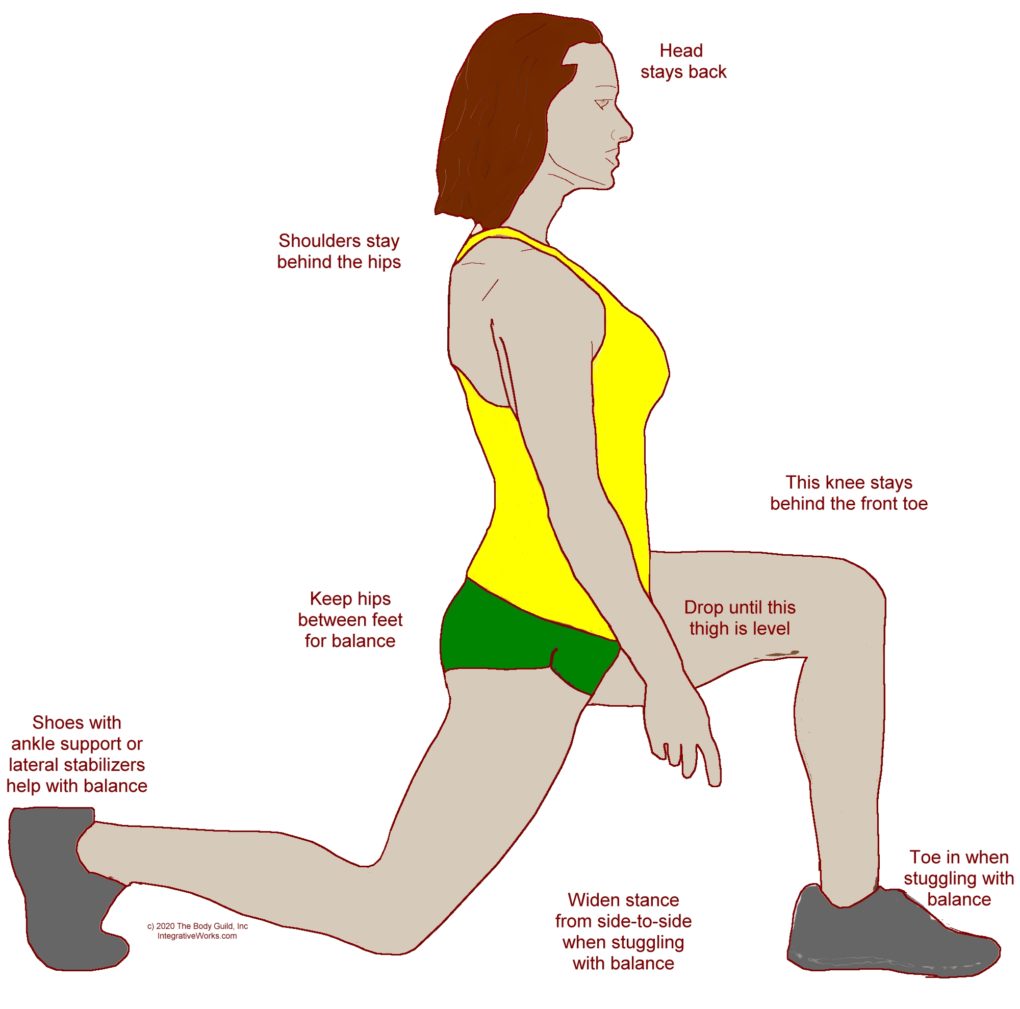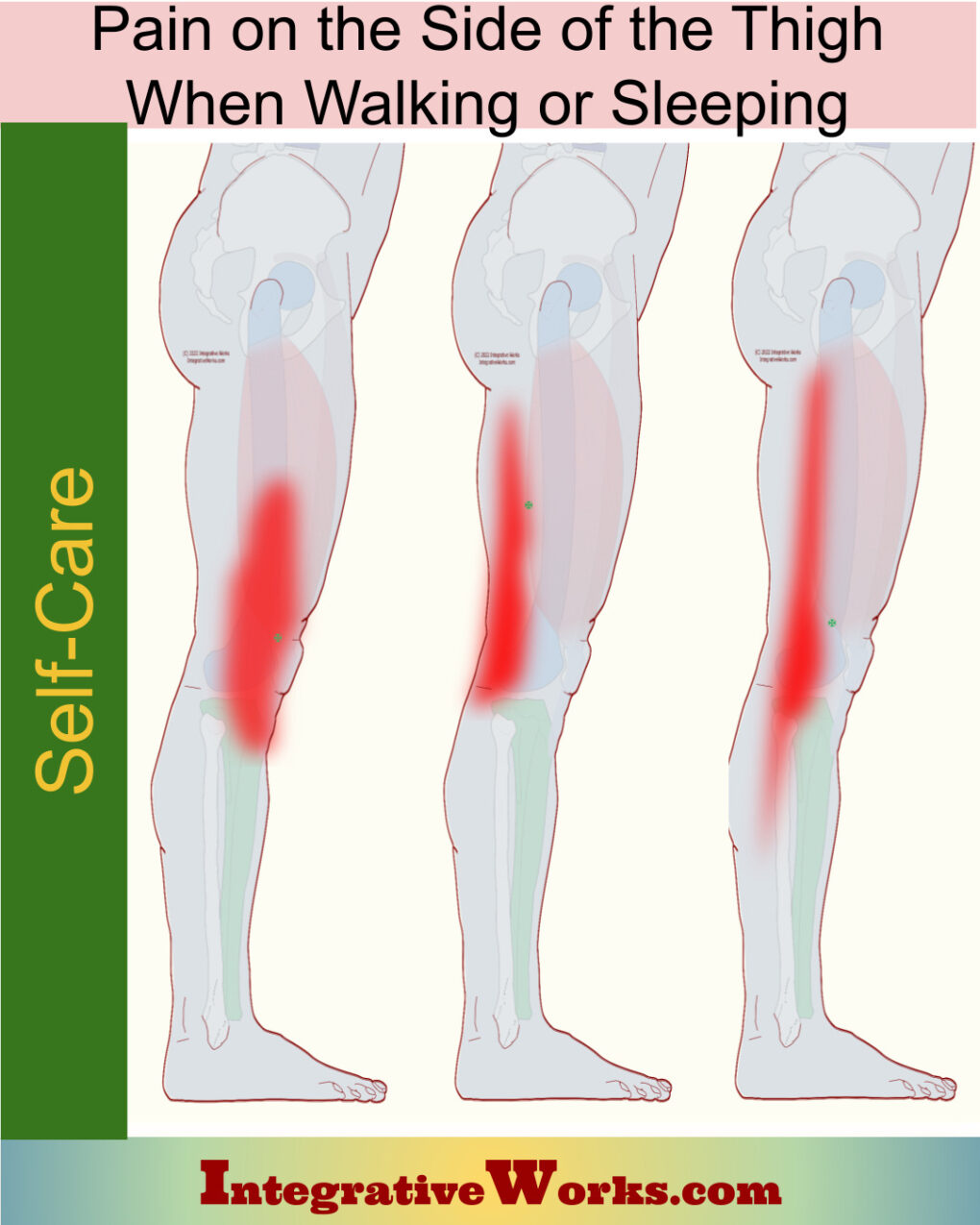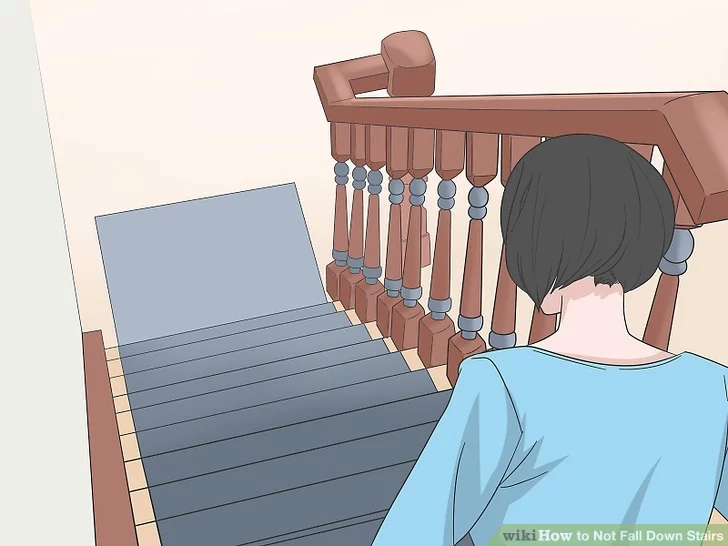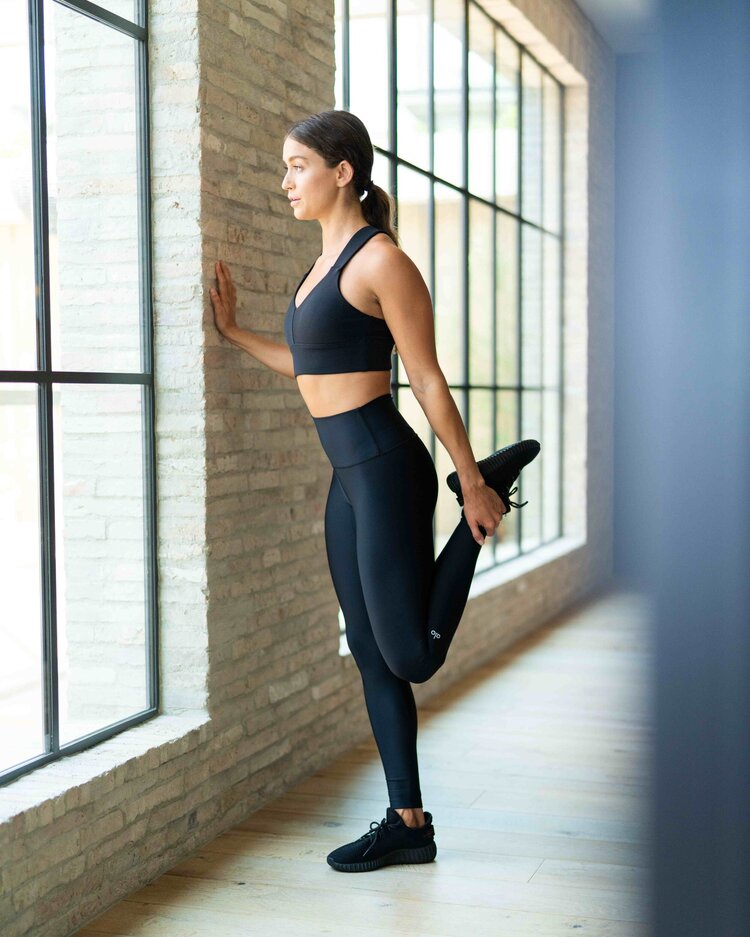Table of Contents
- Activities to Avoid or Change
- For Temporary Relief
- Stretches and Exercises for Longer-Lasting Relief
- Yoga Corner
Here, you will find self-care for pain along the side of the thigh and knee when walking or sleeping. Look at this other post for more information about how people describe this pattern.
Activities To Avoid or Change:
Be Careful on Stairs and Inclines
This muscle can create some stiffness and buckling in the knee on stairs. It tends to happen going upstairs more than going downstairs. However, don’t hurry or run downstairs, especially on steep, curved, or cramped stairways. Never take stairs more than one at a time. Watch your step, especially the last one.
Problematic for the Elderly
This provides a particular challenge for the elderly. Its not just inclines, steps, and uneven surfaces. Additionally, the simple act of picking up dropped objects can lead to a buckling knee that leaves you on the floor.
Avoid Prolonged Immobilization
Theater, long drives, and conferences tend to involve long periods of being stuck in a spot. Work a little at being active. Use a fitness tracker to remind you to get up.
Sleep
Don’t sleep on that side. Just the pressure of the mattress on the side of the leg can activate these trigger points.
For Temporary Relief:
Kinesio Tape for Quadriceps
This is a simple routine for taping quadriceps. Kinesio Tape is available in most drug stores and grocery stores. It is also available Amazon.
These self-care activities, like over-the-counter drugs, are not intended to replace appropriate medical attention. If you have concerns about these self-care activities, get help from a professional. Use these suggestions and strategies with discretion and at your own risk. See your doctor when your pain is severe, persistent, or not responding to these simple suggestions.
Stretches and Exercises for Longer-Lasting Relief:
Be gentle. The Vastus lateralis can be very sensitive. Don’t overwork it with the foam roller. Stretching and icing afterward can help to ease the potential soreness.
Classic Standing Quad Stretch
This stretch is pretty standard. However, people struggle with getting it right. Notably, I spend a lot of time helping people with this simple stretch. Here are some pointers:
- Stabilize yourself with a wall. If you cannot do that, lay down and do this on your side.
- End with your thighs together and your foot behind you. Many people pull the foot out and twist the knee. Don’t.
- Pull your foot to your hip first, then try to bring your knees together. This sequence targets the top of the thigh near the trigger point. Don’t put your knees together first, then pull your foot up.
- This stretch is so much easier and more effective with the ice-and-stretch approach.
The Active Body
If you’re more athletic, lunges are a much better solution for this pain along the thigh and knee. They are more active, retrain movement, mobilize joints and build stabilizers. The first couple of sets may seem sore and a bit unstable. Stick with it. The final sets will allow you to go deeper with less pain and more stability. Long stride walking lunges are great for this. Do four sets of 12 with a minute between sets.

Walking Lunges
- Step forward so the front foot is in front of the knee and the back knee is behind your hips.
- Keep your shoulders back over your hips.
- Lower your torso until the front is level.
- Keep your knee behind your toes on the front leg.
- Widen your stance, turn your front toe in a tiny bit, and focus on keeping your hips between your feet if you are unstable.
- Step forward while minimizing how much your head and front shin lean forward.
- Do 6-10 reps on each leg.
I’d love your feedback on how this works for you and any suggestions you might have.
Email me at integrativeworks@gmail.com.
Yoga Corner
Getting Past Hip Flexors to Stretch Vastus
Most yoga poses focus on these types of stretches that open the hip before they open the quads. That’s not a bad idea. But, you might not have the time and inclination to open hip flexors. However, the pose in this pic requires you to open the iliopsoas and rectus femoris before you can get to vastus lateralis.
Like the stretch in the previous section, a standing stretch has the hip slightly flexed. This isn’t very strict. However, it allows you to target the vastus lateralis without having to open the hip flexors first.
Don’t get me wrong, opening hip flexors is a good goal. Additionally, that will help the vastus lateralis stay open. Sometimes, you just have time to target the problematic muscle.
Support Integrative Works to
stay independent
and produce great content.
You can subscribe to our community on Patreon. You will get links to free content and access to exclusive content not seen on this site. In addition, we will be posting anatomy illustrations, treatment notes, and sections from our manuals not found on this site. Thank you so much for being so supportive.
Cranio Cradle Cup
This mug has classic, colorful illustrations of the craniosacral system and vault hold #3. It makes a great gift and conversation piece.
Tony Preston has a practice in Atlanta, Georgia, where he sees clients. He has written materials and instructed classes since the mid-90s. This includes anatomy, trigger points, cranial, and neuromuscular.
Question? Comment? Typo?
integrativeworks@gmail.com
Follow us on Instagram

*This site is undergoing significant changes. We are reformatting and expanding the posts to make them easier to read. The result will also be more accessible and include more patterns with better self-care. Meanwhile, there may be formatting, content presentation, and readability inconsistencies. Until we get older posts updated, please excuse our mess.





